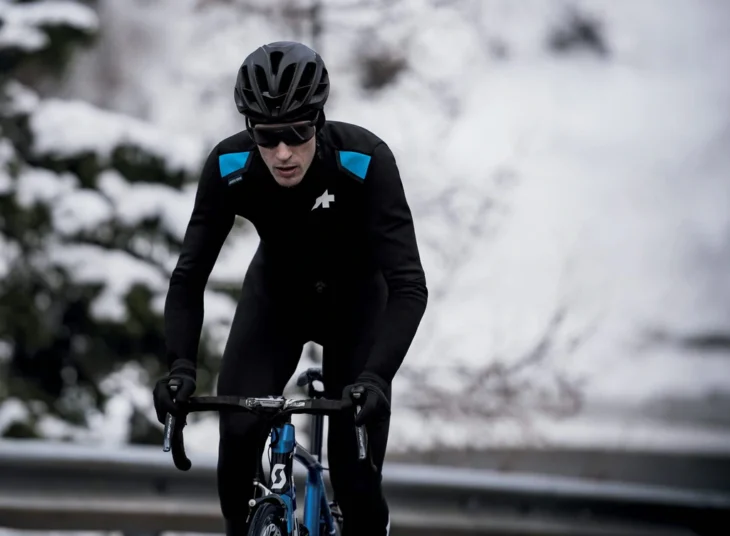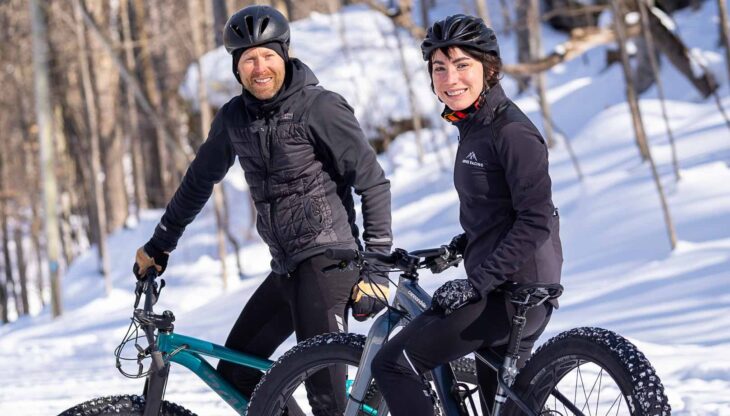The warmest cycling jacket for cycling is a light windproof jacket. You will need to decide whether you want a high neck, medium neck or low neck. Also, you should consider the size of the jacket and if it fits snugly or loosely. For example, if you are 5’10”, weigh around 15 stone (90 kilos), then you should buy a size small jacket.
Do think about what you will be wearing underneath your jacket. For example, if you are cycling in wet weather, you will need a waterproof rain jacket.
If you are cycling in the winter, you should wear a long sleeved top and a windproof vest under your jacket. A couple other things to consider during cold weather cycling:
- Take a break When you are riding a long distance, it is important to take a break. You should stop every 30-40 minutes so that you can drink water and have some food. This will also help you to recover from any muscle aches and soreness.
- Drink plenty of water Drinking enough water is very important when you are cycling. It helps to prevent dehydration and also helps you to stay hydrated.
A jacket that has a hood will keep the worst of the wind out of your face. A long sleeve jacket will be warmer than a short sleeve jacket.
Try to keep the weight of your jacket in the middle of your body. If you are carrying your bike on the front wheel, place the weight in the centre of your torso, where it is less likely to shift as you pedal.
According to ProvizSports, if you are buying a new jacket, try on different sizes and styles. Don’t rush into buying the first one you see – shop around. Look online to compare the prices, and if you are lucky enough to find a discount code, use it.
Waterproof Cycling Jackets

Source: bikerumor.com
The term ‘waterproof’ means that the fabric is water repellent, so that it can keep you dry, even if it gets wet. The same applies to waterproof garments. The main difference between the two terms is that waterproof fabrics don’t let water through as easily as a waterproof garment, but don’t stop it from entering either. Waterproof clothing is usually lighter than waterproof garments, but they don’t allow water to enter as easily and so offer no protection against getting wet.
Waterproof jackets are often worn when you are cycling on water or on wet ground, such as a beach. But they are also popular for everyday cycling, such as commuting, and for climbing. They are also popular among mountain bikers, who ride off road, on unpaved trails, and in hilly terrain. They are useful for keeping the rain off your head and face.
You don’t need to wear a cycling jacket if you are cycling on dry ground or on the tarmac. This includes roads, cycle paths and footpaths, and pavements. However, if it is raining, or you are riding on a muddy or slippery surface, then it is sensible to wear one. They are particularly helpful when you have to carry heavy loads. They can be useful for protecting your clothing from getting wet and dirty, and for keeping the rain off your head. You can choose from many different styles of waterproof jacket including biker jackets, backpacks, touring jackets and more.
Winter Cycling Jackets: The Best Of The Best

Source: bikerumor.com
In the winter months many of us are looking forward to riding our bikes, enjoying the fresh air and sunshine, and perhaps even venturing onto the mountains. In the evenings we can light fires and make hot drinks, or curl up in front of the TV with a box of chocolate. However, when we venture out onto the roads, the weather conditions may change dramatically. What should you be looking for in a winter cycling jacket?
The first thing you need to decide is whether you want a full-zip or zip-up style jacket. Full zips are generally warmer because they provide greater insulation and are less likely to let cold air in around the neck. Zip-ups tend to be lighter, cooler, and more flexible.
Zip-up jackets are usually made of waterproof material, and can protect you from rain and snow. Most of these jackets come with an external windproof layer that can reduce the risk of chills if the wind picks up. In this case, it is better to wear a zip-up jacket rather than a waterproof shell. If you are going to be riding in extreme weather conditions, it’s wise to go for a waterproof jacket, although some of these jackets may not be as windproof as zip-ups.
If you are going to be riding on the hills, check that the jacket has a high collar, which provides protection against wind chill. When the temperature drops below 5°C, the wind chill becomes a real danger. On the other hand, in warmer temperatures, the wind can make you feel warm and uncomfortable if you do not have a high collar.
The jacket should also fit well and have plenty of room inside so that you don’t get chilled. It should be long enough to cover your legs and midriff. Your arms should be able to move freely.
If you are going to be cycling off-road, you will need a lightweight, breathable jacket. The material should be windproof, but it shouldn’t restrict your movement. A good pair of cycling shorts should cover your upper legs and knees. They should be made from thin, breathable material, and have mesh panels that allow air to pass through. They should have a few pockets and a zip to allow for quick access to any items you might need during your ride.
There are several different types of cycling jackets on the market. You might consider a padded jacket, which is lighter and more flexible than a traditional full-length jacket. It has sleeves and an attached hood, but the padding will reduce the amount of protection against cold and wind.
There are also jackets that offer more protection, including back guards and chest and shoulder pads. These are designed to offer more comfort and stability. But remember, not every jacket is the same. Look for brands that offer good quality, practical clothing for the cyclist.
As you shop, remember that you should pay careful attention to your fit. Don’t choose a jacket just because it looks good. Remember that, like a bicycle, your jacket is a vital part of your overall equipment. You might want to ask your local bike shop to advise you on which jacket will work best for you.
The Best Cycling Jackets Summarized

Source: bikerumor.com
As the weather gets cooler, so does the fashion for cycling jackets. Whether you are planning to cycle or just enjoy the outdoors, here are a few suggestions.
Buy your cycling jacket when you plan to use it most often. Buy a jacket that is easy to put on and off. Choose one that is practical and comfortable, with an option for sun protection. Keep the weight down by choosing a light jacket.
Look for a lightweight jacket with a zip that fastens around the front and shoulders, and with a single open pocket. If you cycle regularly, you need a jacket that is easy to wash. A waterproof, breathable jacket, such as a Goretex jacket, will be warm and windproof, but heavy.
For cool weather, look for a jacket with a windproof and water-resistant lining. Look out for jackets that have a hood, either permanently attached or detachable. Make sure that there is plenty of ventilation and that there are no irritating zips.
If you wear a helmet, look for a jacket with a protective collar. Buy a jacket that suits your style and personality. If you are planning to buy one, go to a bike shop and see what they have to offer.
